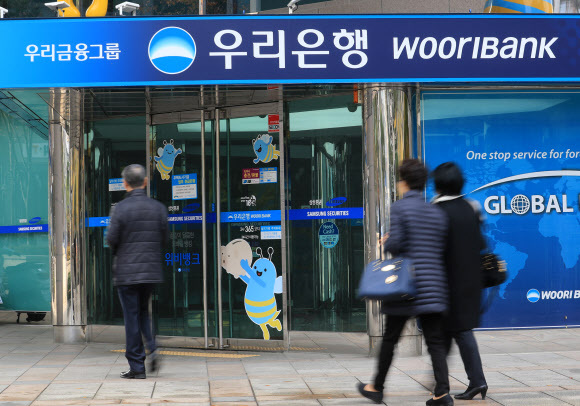S. Korea issued $2.7b high-risk derivative products in 2018: data
By Jung Min-kyungPublished : Aug. 22, 2019 - 16:01
South Korea’s financial institutions issued 3.2 trillion won ($2.7 billion) worth of high-risk derivatives-linked securities last year that did not guarantee the return of the investor’s original investment, according to data from the Korea Financial Investment Association released Thursday.
The volume of such DLS issued increased 29 percent on-year from 2.9 trillion won in 2017 and hit a record high, feeding concerns over South Korean investors’ growing appetite for high-risk, high-return products.
The data was released days after the policymaking Financial Services Commission announced a probe of major banks and brokerages here that sold a combined 822.4 billion won worth of DLS and related funds to their customers, allegedly without providing sufficient warnings. Commercial banks Woori and KEB Hana were the most active sellers of the products.
The volume of such DLS issued increased 29 percent on-year from 2.9 trillion won in 2017 and hit a record high, feeding concerns over South Korean investors’ growing appetite for high-risk, high-return products.
The data was released days after the policymaking Financial Services Commission announced a probe of major banks and brokerages here that sold a combined 822.4 billion won worth of DLS and related funds to their customers, allegedly without providing sufficient warnings. Commercial banks Woori and KEB Hana were the most active sellers of the products.

According to the KFIA, non-principal-protected products accounted for nearly 25 percent of the total volume of DLS issued in 2018, which amounted to 12.6 trillion won. Principal refers to the initial sum of money put into an investment.
The rest, 74.5 percent, were principal-protected products.
The data also showed Korean investors’ growing preference for high-risk derivative products with the issuance of non-principal-protected DLS products having increased 22-fold in the last five years, from 150 billion won in 2013 to 3.2 trillion won last year.
In the same period, principal-protected DLS increased only 20.4 percent.
Of non-principal-protected DLS products issued last year, 99.7 percent were sold in the form of private equity funds, which primarily target high-net-worth individual investors.
Those non-principal-protected products included the DLS tied to the performance of a constant maturity swap between US and UK treasury bonds, and to the yield of 10-year state bonds from Germany -- the two main investments that are currently projected to cause investors to lose most of their principal.
The DLS products are designed to trail the performance of underlying assets, such as stocks or equity indexes, and their returns are determined by the movements of the underlying assets. They bring higher returns than interest income, but at the risk of investors losing principal.
Meanwhile, FSC Chairman Choi Jong-ku said the probe of the institutions and parties responsible for the latest incident will be launched Friday. The probe will be jointly launched with the watchdog Financial Supervisory Service.
“We will look into the background of what caused the investors to lose such large sums of money, whether there were issues when banks sold the products to their customers, the design of the products and if it is necessary for banks, not brokerages, to continue offering such high-risk products to their customers,” Choi said in a meeting held at the National Assembly around noon.
“But we must also acknowledge that such products are a double-edged sword -- if there are gains, there are also losses. It is a product that guarantees high returns if the situation turns in favor of the investor,” he added, indicating that the probe will be carried out from a balanced perspective.
By Jung Min-kyung (mkjung@heraldcorp.com)


![[Exclusive] Korean military set to ban iPhones over 'security' concerns](http://res.heraldm.com/phpwas/restmb_idxmake.php?idx=644&simg=/content/image/2024/04/23/20240423050599_0.jpg&u=20240423183955)




![[Herald Interview] 'Amid aging population, Korea to invite more young professionals from overseas'](http://res.heraldm.com/phpwas/restmb_idxmake.php?idx=644&simg=/content/image/2024/04/24/20240424050844_0.jpg&u=20240424200058)

![[Pressure points] Leggings in public: Fashion statement or social faux pas?](http://res.heraldm.com/phpwas/restmb_idxmake.php?idx=644&simg=/content/image/2024/04/23/20240423050669_0.jpg&u=)









